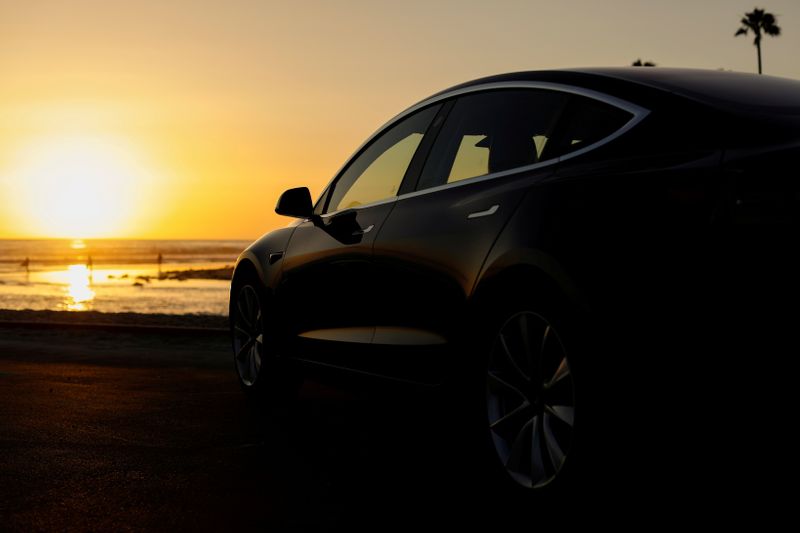(Reuters) - Reuters analyzed data generated by an Argonne National Laboratory (NYSE:LH) model to determine at what point a typical electric vehicle (EV) becomes cleaner than an equivalent gasoline car in terms of its lifetime carbon footprint.
Based on a series of assumptions, the data showed that a Tesla (NASDAQ:TSLA) Model 3 in the United States, for example, would need to be driven for 13,500 miles (21,725 km) before it does less harm to the environment than a Toyota Corolla.
Following are the assumptions Reuters plugged into the Argonne model to produce different break-even scenarios, depending on how the power used to charge an EV is generated.
MID-SIZE SALOON
Tesla Model 3 (EV) vs Toyota Corolla (gasoline)
Lifetime vehicle miles traveled: 173,151
Fuel economy (gasoline): 33 miles per gallon (U.S.)
Curb weight: Model 3 - 3,582 lbs (1,625 kg), Corolla - 2,955 lbs
EV battery range: 300 miles
EV battery type: Lithium-ion
EV battery size: 54 kilowatt-hours (kWh)
EV battery cathode material: nickel-cobalt-aluminium (NCA)
Power scenario 1: 100% hydroelectric
Break-even point: 8,400 miles
Power scenario 2: U.S. average energy mix (23% coal-fired, plus other fossil fuels and renewables)
Break-even point: 13,500 miles
Power scenario 3: 100% coal-fired
Break-even point: 78,700 miles
MID-SIZE SPORT UTILITY VEHICLE (SUV)
Tesla Model Y (EV) vs Honda CR-V (gasoline)
Lifetime vehicle miles traveled: 183,363
Fuel economy (gasoline): 30 miles per gallon (U.S.)
Curb weight: Model Y - 4,416 lbs, CR-V - 3,337 lbs
EV battery range: 300 miles
EV battery type: Lithium-ion
EV battery size: 60 kWh
EV battery cathode material: nickel-cobalt-aluminium (NCA)
Power scenario 1: 100% hydroelectric
Break-even point: 9,200 miles
Power scenario 2: U.S. average energy mix (23% coal-fired, plus other fossil fuels and renewables)
Break-even point: 14,800 miles

Power scenario 3: 100% coal-fired
Break-even point: 89,000 miles